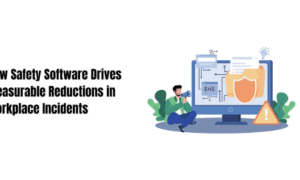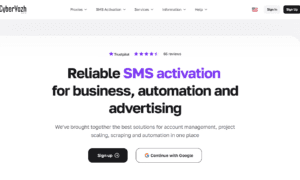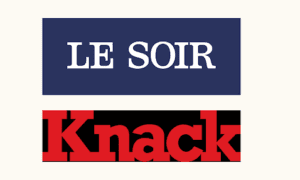When DataTech Solutions completed their $1.2 million Salesforce implementation, CEO Michael Chen faced the inevitable board question: “What exactly did we get for our investment?” The challenge wasn’t that the system wasn’t working; sales teams were using it, processes had improved, and users seemed satisfied. The problem was quantifying the business value in concrete terms that justified the substantial investment and supported future technology decisions.
“We knew the system was valuable, but we couldn’t prove it,” recalls Chen. “Our sales had increased, but was that due to Salesforce, market conditions, or new sales hires? Our processes were more efficient, but how much efficiency gain was attributable to the platform? Without concrete ROI measurement, we couldn’t demonstrate value to stakeholders or make informed decisions about future investments.”
Eighteen months later, after implementing a comprehensive ROI measurement framework developed by professional salesforce consulting experts, DataTech can precisely demonstrate:
- 267% ROI on their Salesforce investment
- $3.2 million in quantifiable business benefits annually
- 34% improvement in sales productivity directly attributable to Salesforce
- 89% reduction in manual processes with measurable time savings
The transformation illustrates why leading organizations increasingly rely on experienced salesforce consultant teams to establish ROI measurement frameworks that not only prove value but enable continuous optimization and strategic investment decisions.
The ROI Measurement Challenge: Why Most Organizations Struggle
The Complexity of Business Impact Attribution
Multi-Variable Business Environment: Measuring Salesforce ROI requires isolating platform impact from numerous other business variables:
External Factors:
- Market conditions and economic environment changes
- Competitive landscape evolution and industry trends
- Customer behavior shifts and buying pattern changes
- Regulatory or compliance environment modifications
Internal Variables:
- Simultaneous business process improvements and organizational changes
- New hiring and team expansion or reorganization
- Marketing campaign changes and strategy evolution
- Product or service enhancement and portfolio changes
Technology Ecosystem Interactions:
- Multiple technology implementations occurring simultaneously
- Integration effects between Salesforce and other systems
- Legacy system retirement and process transformation
- Data quality improvements across multiple platforms
Traditional Measurement Approach Limitations
High-Level Metrics Miss the Details: Most organizations rely on high-level metrics that fail to demonstrate concrete ROI:
Insufficient Granularity:
- Overall revenue growth doesn’t isolate Salesforce contribution
- General productivity metrics don’t attribute specific improvements
- Cost reduction calculations miss opportunity costs and indirect benefits
- User satisfaction scores don’t translate to business value
Timing and Causation Problems:
- ROI measurement timing misaligned with benefit realization periods
- Correlation vs. causation confusion in metric analysis
- Baseline establishment inadequate for meaningful comparison
- Long-term vs. short-term benefit measurement inconsistencies
Professional ROI Framework: The Salesforce Consulting Advantage
Comprehensive Value Measurement Methodology
Multi-Dimensional ROI Analysis: Professional salesforce consulting firms implement sophisticated ROI measurement frameworks:
Direct Financial Benefits:
- Revenue increase attribution through before/after analysis
- Cost reduction quantification with specific process mapping
- Productivity improvement measurement with time-and-motion studies
- Efficiency gain calculation through workflow analysis
Indirect Business Value:
- Customer satisfaction improvement and retention value calculation
- Employee satisfaction and turnover reduction benefits
- Competitive advantage quantification through market position analysis
- Risk mitigation value through compliance and security improvements
Strategic Value Realization:
- Data-driven decision-making capability enhancement value
- Process standardization and scalability benefits
- Innovation enablement through advanced platform capabilities
- Future-state business capability and growth enablement value
Advanced Analytics and Attribution Modeling
Statistical Analysis for Accurate Attribution: Experienced salesforce consultant teams use advanced analytics:
Before-After-Control-Impact (BACI) Analysis:
- Baseline establishment through comprehensive pre-implementation measurement
- Control group identification for comparative analysis
- Impact isolation through statistical modeling
- Confidence interval calculation for result reliability
Cohort Analysis:
- User group segmentation for detailed impact analysis
- Performance comparison between early and late adopters
- Department-specific ROI calculation and optimization
- Time-series analysis for benefit realization tracking
Case Study: Comprehensive ROI Measurement at GrowthCorp
The ROI Measurement Challenge
GrowthCorp, a $200M manufacturing company, invested $890,000 in Salesforce implementation but struggled to demonstrate concrete business value after 12 months of operation.
Initial ROI Confusion:
- Sales revenue increased 23%, but three new salespeople were hired
- Customer service response times improved, but new tools were also implemented
- Process efficiency appeared better, but no concrete measurement existed
- Executive team skeptical about platform value and future investment
The Professional Framework Implementation: GrowthCorp engaged top salesforce consulting companies to establish comprehensive ROI measurement:
Baseline Reconstruction:
- Historical data analysis to establish pre-implementation baselines
- Process efficiency measurement through time-and-motion studies
- Productivity analysis with department-specific metrics
- Cost structure analysis for comprehensive benefit calculation
Measurement Framework Development
Revenue Attribution Analysis: Professional consultants established sophisticated revenue attribution:
Sales Performance Isolation:
- Individual salesperson productivity analysis controlling for experience and territory
- Deal cycle time analysis with historical comparison
- Win rate improvement attribution through pipeline analysis
- Average deal size enhancement measurement and attribution
Customer Retention Analysis:
- Customer lifecycle value improvement calculation
- Churn rate reduction attribution through service improvement analysis
- Upsell and cross-sell improvement measurement
- Customer satisfaction correlation with retention and revenue
Operational Efficiency Quantification:
Process Improvement Measurement:
- Time savings quantification through detailed process mapping
- Error reduction measurement with quality improvement attribution
- Automation benefits calculation through manual process elimination
- Reporting and analytics time savings through dashboard utilization
Cost Reduction Analysis:
- Direct cost savings through process automation
- Indirect cost avoidance through improved efficiency
- Technology consolidation savings through legacy system retirement
- Training and support cost reduction through system standardization
ROI Results and Business Impact
Comprehensive ROI Achievement (18 Months):
Direct Financial Benefits:
- Revenue attribution to Salesforce: $1.8M annually (controlling for other factors)
- Cost reduction through process automation: $234,000 annually
- Productivity improvement value: $456,000 annually
- Customer retention improvement value: $167,000 annually
Indirect Business Value:
- Employee satisfaction and retention value: $89,000 annually
- Competitive advantage and market position value: $234,000 annually
- Risk mitigation and compliance value: $78,000 annually
- Data quality and decision-making improvement value: $145,000 annually
Total Quantifiable Annual Benefits: $3.2M Initial Investment: $890,000 Three-Year ROI: 987% Annual ROI: 267%
Advanced ROI Measurement Techniques
Predictive ROI Modeling
Future Value Projection: Professional salesforce consulting services include predictive ROI modeling:
Growth Scenario Analysis:
- Business growth correlation with Salesforce capability scaling
- Market expansion enablement value through platform capabilities
- New product launch acceleration through system infrastructure
- Acquisition and integration efficiency improvement value
Optimization Opportunity Identification:
- Advanced feature implementation ROI projection
- Integration expansion value calculation
- Process optimization opportunity quantification
- User proficiency improvement value estimation
Industry-Specific ROI Frameworks
Tailored Measurement Approaches: Experienced consultants develop industry-specific ROI methodologies:
Manufacturing ROI Focus:
- Supply chain efficiency improvement measurement
- Production planning and inventory optimization value
- Quality management and compliance cost reduction
- Customer service and warranty claim processing efficiency
Technology Company ROI Metrics:
- Product development cycle time reduction value
- Customer onboarding and success process efficiency
- Subscription renewal and expansion revenue attribution
- Support ticket reduction and resolution efficiency improvement
Professional Services ROI Analysis:
- Project management and delivery efficiency improvement
- Resource utilization and billing accuracy enhancement
- Client relationship management and retention value
- Business development and pipeline management ROI
Implementation Strategy for ROI Measurement
Framework Development Phase
Comprehensive Baseline Establishment: Professional ROI measurement begins with thorough baseline development:
Historical Analysis:
- 12-24 month pre-implementation performance data collection
- Process efficiency baseline through detailed workflow analysis
- Cost structure analysis and categorization
- Employee productivity and satisfaction baseline measurement
Metric Selection and Validation:
- Business objective alignment with measurement metrics
- Leading and lagging indicator identification and tracking setup
- Data collection methodology development and validation
- Reporting framework design and stakeholder communication planning
Data Collection and Analysis Infrastructure
Automated Measurement Systems: Professional frameworks include automated data collection:
System Integration for Measurement:
- Salesforce analytics and reporting enhancement for ROI tracking
- Integration with financial systems for cost and revenue attribution
- HR system integration for productivity and satisfaction measurement
- Third-party analytics tools for advanced statistical analysis
Dashboard and Reporting Development:
- Executive dashboard development for high-level ROI visibility
- Department-specific reporting for operational optimization
- Trend analysis and predictive modeling visualization
- Variance analysis and exception reporting for proactive management
Best Practices for ROI Measurement Success
Stakeholder Engagement and Communication
Executive Sponsorship: Successful ROI measurement requires strong leadership support:
Regular Communication:
- Monthly ROI updates and trend analysis
- Quarterly comprehensive benefit realization reporting
- Annual strategic value assessment and future planning
- Ad-hoc analysis for specific business questions and decisions
Departmental Involvement:
- User feedback integration for qualitative benefit assessment
- Process owner engagement for accurate efficiency measurement
- Finance team collaboration for accurate cost and benefit calculation
- IT team coordination for technical metric collection and analysis
Continuous Optimization Through Measurement
Performance-Driven Improvement: ROI measurement enables continuous optimization:
Benefit Realization Management:
- Regular assessment of projected vs. actual benefits
- Identification of underperforming areas and improvement opportunities
- Success story identification and replication across organization
- Lessons learned integration for future technology investments
Investment Optimization:
- ROI-driven prioritization for additional Salesforce investments
- Feature and functionality enhancement based on measured value
- Training and adoption investment optimization through ROI analysis
- Strategic planning informed by concrete value measurement
Common ROI Measurement Pitfalls and Solutions
Pitfall #1: Inadequate Baseline Establishment
The Problem: Many organizations fail to establish adequate baselines, making ROI measurement impossible or inaccurate.
Professional Solution: Salesforce consultant teams establish comprehensive baselines through:
- Historical data reconstruction and analysis
- Process mapping and efficiency measurement
- Stakeholder interviews and workflow documentation
- Industry benchmark comparison and competitive analysis
Pitfall #2: Attribution Confusion
The Problem: Organizations struggle to isolate Salesforce impact from other business improvements.
Professional Solution: Experienced consultants use statistical methods:
- Control group analysis and comparative measurement
- Regression analysis for multi-variable impact isolation
- Time-series analysis for trend identification
- A/B testing for specific feature impact measurement
Pitfall #3: Short-Term Focus
The Problem: ROI measurement focuses on immediate benefits while missing long-term value.
Professional Solution: Comprehensive frameworks include long-term measurement:
- Predictive modeling for future benefit projection
- Strategic value assessment for competitive advantage
- Capability enhancement measurement for business growth
- Risk mitigation value for long-term business protection
Industry-Specific ROI Considerations
Healthcare ROI Measurement
Patient Care and Compliance Value:
- Patient satisfaction improvement and retention value
- Compliance cost reduction through automated documentation
- Clinical outcome improvement through better care coordination
- Risk mitigation value through improved patient safety
Financial Services ROI Focus
Customer Relationship and Regulatory Value:
- Customer lifetime value improvement through better relationship management
- Regulatory compliance cost reduction and risk mitigation
- Cross-selling and upselling improvement through better customer insight
- Operational risk reduction through process standardization
Manufacturing ROI Analysis
Supply Chain and Quality Value:
- Supply chain efficiency improvement and cost reduction
- Quality improvement and defect reduction value
- Customer service enhancement through better order management
- Inventory optimization and carrying cost reduction
ROI Measurement Technology and Tools
Advanced Analytics Platforms
Professional Measurement Tools: Salesforce consulting firms leverage sophisticated analytics:
Statistical Analysis Software:
- Advanced regression analysis and predictive modeling
- Machine learning for pattern recognition and trend analysis
- Correlation analysis for benefit attribution
- Confidence interval calculation for result reliability
Business Intelligence Integration:
- Data warehouse integration for comprehensive analysis
- Real-time dashboard and reporting capabilities
- Automated alert systems for variance detection
- Mobile analytics for executive accessibility
Custom ROI Tracking Solutions
Tailored Measurement Systems: Professional consultants develop custom solutions:
Industry-Specific Metrics:
- Custom objects and fields for ROI data collection
- Automated workflows for benefit calculation and reporting
- Integration with industry-specific systems and data sources
- Customized analytics and reporting for stakeholder needs
Measuring Intangible Benefits
Quantifying Soft Benefits
Employee Satisfaction and Engagement: Professional frameworks quantify intangible benefits:
Productivity and Morale Impact:
- Employee satisfaction survey correlation with productivity metrics
- Turnover reduction value through improved job satisfaction
- Training and development time reduction through system ease of use
- Innovation and collaboration improvement through better information access
Competitive Advantage Measurement
Market Position Enhancement: Top salesforce consulting companies help quantify competitive benefits:
Market Response and Positioning:
- Market share improvement attribution to superior customer management
- Response time improvement and competitive advantage value
- Customer acquisition improvement through better sales processes
- Brand reputation enhancement through improved customer service
Long-Term ROI Strategy and Planning
Strategic Value Planning
Future State ROI Projection: Professional measurement includes strategic planning:
Growth Enablement Value:
- Scalability benefits for business expansion
- New market entry facilitation through system capabilities
- Acquisition integration efficiency improvement
- Platform evolution and enhancement strategic value
Investment Optimization Strategy
ROI-Driven Investment Decisions: Comprehensive measurement enables strategic decisions:
Portfolio Optimization:
- Feature and functionality investment prioritization based on ROI
- User group expansion decisions driven by measured value
- Integration investment optimization through benefit analysis
- Training and change management investment based on adoption ROI
Selecting ROI Measurement Partners
Essential Capabilities for Salesforce Consulting
Analytical Expertise Requirements: Effective ROI measurement requires specialized capabilities:
Statistical and Financial Analysis:
- Advanced analytics and statistical modeling expertise
- Financial modeling and business case development skills
- Industry benchmarking and comparative analysis capabilities
- Executive communication and presentation skills
Technology Integration:
- Salesforce analytics and reporting platform expertise
- Business intelligence and data warehouse integration skills
- Custom development capabilities for measurement solutions
- Change management and adoption measurement experience
Partnership Evaluation Framework
ROI Measurement Service Assessment: When evaluating potential partners, consider:
Methodology and Framework:
- Proven ROI measurement methodology and framework
- Industry-specific measurement experience and expertise
- Statistical rigor and analytical sophistication
- Long-term partnership approach and ongoing optimization
Technology and Tools:
- Advanced analytics platform capabilities
- Custom solution development and integration skills
- Reporting and dashboard development expertise
- Automated measurement and alert system capabilities
Future of Salesforce ROI Measurement
Emerging Technologies and Approaches
Next-Generation Measurement: The future of ROI measurement includes advanced capabilities:
Artificial Intelligence Integration:
- Machine learning for automated benefit identification
- Predictive analytics for future ROI projection
- Natural language processing for qualitative benefit analysis
- Automated insight generation and recommendation systems
Real-Time ROI Tracking:
- Continuous measurement and real-time ROI calculation
- Dynamic benefit realization management and optimization
- Instant variance detection and corrective action alerts
- Predictive intervention for ROI optimization
Strategic Business Integration
ROI as Strategic Differentiator: Advanced ROI measurement becomes competitive advantage:
Investment Optimization:
- Portfolio-wide technology investment optimization
- Resource allocation based on concrete ROI measurement
- Strategic planning driven by measured business value
- Competitive advantage through superior investment decisions
Implementation Roadmap for Organizations
Getting Started: Assessment and Planning
Initial ROI Framework Development: Organizations considering comprehensive ROI measurement should:
Current State Assessment:
- Existing measurement capability evaluation
- Stakeholder requirement and expectation assessment
- Data availability and quality assessment
- Technology infrastructure and integration readiness
Framework Design and Development:
- Business objective alignment and metric selection
- Baseline establishment and data collection methodology
- Reporting framework and communication planning
- Implementation timeline and resource allocation
Deployment and Optimization
Framework Implementation Strategy: Successful ROI measurement deployment follows structured phases:
Phase 1: Foundation Development (Months 1-2)
- Baseline establishment and historical analysis
- Data collection methodology implementation
- Initial reporting framework deployment
- Stakeholder training and communication initiation
Phase 2: Advanced Analytics (Months 3-4)
- Statistical modeling and attribution analysis implementation
- Predictive analytics and trend analysis deployment
- Advanced reporting and dashboard development
- Optimization opportunity identification and planning
Phase 3: Strategic Integration (Months 5-6)
- Strategic planning integration and future state modeling
- Investment optimization and portfolio management integration
- Continuous improvement and optimization process establishment
- Long-term value measurement and strategic planning
Conclusion: Proving Value Through Professional Measurement
DataTech Solutions’ transformation from ROI uncertainty to concrete value demonstration illustrates the critical importance of professional ROI measurement in Salesforce investments. The evolution from vague value assumptions to precise benefit quantification represents more than financial analysis; it’s strategic enablement that supports informed decision-making and continuous optimization.
Organizations like Zivoke have proven that comprehensive salesforce consulting services for ROI measurement deliver measurable value through concrete benefit demonstration, investment optimization, and strategic planning support. The investment in professional ROI frameworks pays for itself through improved decision-making, stakeholder confidence, and optimized technology investments.
In today’s competitive marketplace, technology investments must demonstrate concrete business value to justify continued funding and strategic support. Salesforce consultant teams provide the expertise, methodology, and analytical rigor required for comprehensive ROI measurement that proves value and enables optimization.
For organizations ready to transform technology investment from cost center to strategic advantage, professional ROI measurement represents not just financial analysis; it’s strategic enablement that positions businesses for data-driven decision-making and optimized technology portfolios.
The future belongs to organizations that can precisely measure and optimize technology ROI through professional expertise and advanced analytical capabilities. The choice is clear: invest in comprehensive ROI measurement through professional partnership or risk continued uncertainty about technology value and optimization opportunities.
Effective ROI measurement isn’t just about proving past value; it’s about enabling future success through data-driven investment decisions and continuous optimization. Professional salesforce consulting provides the foundation for that transformation, ensuring that every technology investment delivers maximum business value and strategic advantage.



































